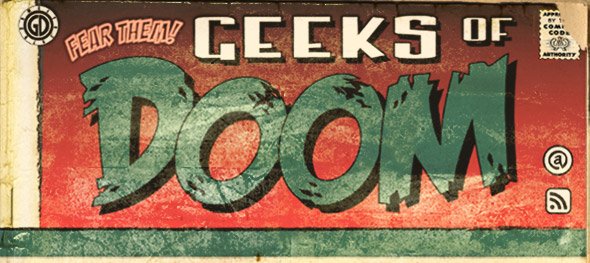
Batman has become one of, if not the most well known characters in the history of American pop culture. He’s been dark, he’s been bright, and he’s even been an agent of propaganda, but one thing that has remained consistent is that people know who Batman is. With The Evolution of Batman in Popular Culture, my attempt is to take an extensive look at all the ways that Batman can be interpreted, why he’s remained a consistent force in popular culture, and how he becomes a reflection of society making him the most iconic superhero.
When Batman (Bat-Man) was created by Bill Finger and Robert Kane, he was initially created as an answer to Jerry Siegel and Joe Shuster’s iconic superhero of the lower class. And while Superman was given super powers and a fighting stance against corruption, Batman was a little darker. The creation of Batman came mainly from pulp novels, Zorro, and the 1926 horror film The Bat. Batman was a weird creature of the night that, initially, wasn’t afraid to kill and would do so if the criminal “deserved” it. In his creation, Batman is already a reflection of an era that is commonly described as being hopeful, yet disillusioned in the face of World War II, a time when almost everyone was on board with the Allied Powers in their war against the Evil Axis Powers. Society was cut and dry, good and bad, so a four-color look at a wealthy vigilante lent itself perfectly to the culture of the time.
Furthermore, this interpretation of The Batman was moved into the popular propaganda films shown during war times where Batman and Robin teamed up to fight on the home front while all the soldiers were defending America’s freedom. Sure, if you try to watch The Batman and the Batman and Robin serials, you’re going to lose your mind if you’re brain’s not stuck in a World War II mindset in which you’re pretty much sure that Japanese people are completely evil and should be punished for all their evil deeds. Yes, it’s completely ridiculous and completely wrong, but it is 100% an accurate portrayal of the United States’ attitude toward the world at the time. Another aspect of this that’s worth mentioning is that in most superhero stories, this was the interpretation. In fact, this was the interpretation of most movie serials during the time period, but for the sake of argument, even as an overweight “on-a-budget” looking Batman, the interpretation is valid and represents the time.
The next major incarnation of The Caped Crusader came with “The New Look” that accompanied the heralding in of The Silver Age of comics. Oddly enough, with sales of superhero comics tanking, the introduction of the Batman TV show came to our Earth and showed a completely different side of Batman. This Batman was campy, this Batman was fun, this Batman was kid friendly, and above all else, this Batman was psychedelic. If one thing is tied to the 1960s, whether accurately or not, it’s the free love, acid freak hippie nature of society at the time. This youth culture was high on life and many other things which made straight-laced stiffs, like Adam West’s portrayal of the Batman character, completely hilarious. While kids were loving the cartoony action of Batman, the elaborate death traps created by brilliantly acted villains like The Riddler, The Joker, King Tut, and Egg Head, adults saw the humor that laced every other moment outside of the square Adam West. The cast was in on the joke, the adults were in on the joke, the only ones that were left out were the kids. And quite honestly, as a kid who watched this show growing up, it was absolutely perfect. All of the elements that are over done and goofy to me as an adult, which I still adore, were exactly what my child-like mind thought a superhero TV show about Batman should be like. The goofy, post-Wertham nature of The Silver Age in comics, alongside the ironic attitude of the country allowed Batman to be one of the biggest pop culture icons of the pre-Vietnam 1960s. Most today would refuse to admit the importance of this era of Batman, but when you take a grander look at his history, Batman reflects society, and that exactly what happened with Batman ’66.
Following the escapades of Adam West’s Batman, the titular character was relegated mostly to cartoon shows with interactions between other Warner properties like Scooby-Doo. Sure there was the live-action special Legends of The Superheroes which showed a handful of DC heroes fighting DC villains, but for the most part, while Batman was being redefined in the comics throughout the 70s, Batman for better or worse became a cartoon character. He stayed in the minds of children and parents until the 1980s when Frank Miller got a hold of him. In Miller’s The Dark Knight, he redefined what a superhero comic book could do, and alongside Alan Moore’s Watchmen, he changed comic books forever. Miller, as a writer, creates stories with hardboiled toughs in an incredibly dark setting, and after this version of Batman was brought to the attention of the masses again for the first time since the 1940s/1950s, Batman was once again The Dark Knight. This next step in Batman’s evolution led to filmmaker Tim Burton‘s 1989 Batman.
Batman was the next big superhero movie after the Superman franchise took off and then ultimately fell off due to poor writing/directing/producing/lack of public interest. After the boom and economic hopefulness of the 1980s, we were met with the grunge era. The grunge era, as I’m calling it, accompanied musical acts like Alice in Chains, Nirvana, Pearl Jam, The Pixies, and The Melvins, and was a sign of America’s youth caught up in a wave of disillusionment. Gone was the chrome horizon of the 1980s. What we were welcomed with, and on a path towards, was a somewhat dark era in which many felt ostracized and hopeless. It’s my opinion that 1989’s Batman helped usher in that time period, but either way, it’s hard to deny that Tim Burton’s cartoony gothic hero was not in part a reflection of that mood. When Batman hit theaters, fans saw a new Batman dressed all in black whose motivation once again became vengeance on the part of his parents’ murder. The gothic hero was an orphan on a grand scale, and considering the attitude of America’s teens at the time, people flocked to this interpretation. In fact, Batman stayed on track with Burton for quite some time, which included the debut of Batman: The Animated Series, which many young kids used as their first exposure to The Dark Knight and in the future, this series would become incredibly important, but we’ll get back to that in just a little bit when we discuss the modern era. This truly was a renaissance for The Batman.






Very interesting read! Neat to get a perspective of each incarnation of Batman as it relates to the mindset of their respective periods. Never seen a breakdown of Batman’s evolution in this context before. Good job!
Comment by PAUL — July 18, 2012 @ 9:33 am
Try reading Batman and Psychology: A Dark and Stormy Knight
It’s a good read:)
Comment by RKT — May 5, 2013 @ 9:33 pm